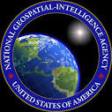NGA invites industry to upcoming operations technology solution discovery day
 On August 7, the National Geospatial-Intelligence Agency posted the following notice, announcing its upcoming NGA Operations Technology Solution Discovery Day. The registration deadline is September 3 at 5:00pm Eastern.
On August 7, the National Geospatial-Intelligence Agency posted the following notice, announcing its upcoming NGA Operations Technology Solution Discovery Day. The registration deadline is September 3 at 5:00pm Eastern.
The National Geospatial-Intelligence Agency invites you to an NGA Operations Technology Solution Discovery Day, Monday, September 14, 2015, from 8:00 AM to 12:30 PM (Eastern) in the Allder Auditorium at NGA’s Springfield, VA campus. This event will be hosted by Mr. Orrin Mills, Director, Source Operations Group, within NGA’s Source Operations and Management Directorate.
Collaborating with Industry
Early and frequent interaction and collaboration with industry and academia is critical to the NGA mission, our customers, and our strategic partnerships. Through our Operations Technology events, NGA is seeking to develop expanded and novel operational capabilities and advanced GEOINT solutions that are informed by innovation and evolving technical expertise.This event specifically aims to enhance dialogue with our private sector partners on the Next Generation (NextGen) initiative, provide an update on current capabilities, discuss gaps in our services and technology, and enable collaborative problem solving. This will promote a shared understanding of the challenges and opportunities we face; generate novel concepts to pursue as we move forward; and ultimately improve operational capabilities.
Solution Discovery Day
The geospatial and satellite supplier markets are undergoing unprecedented growth. The implication of this growth is an increased supplier management role that may potentially incorporate different commercial models, more purchases of services (vs. pixels), less direct collection tasking, and more assessment of impact against needs. Advances in technology and big data are opening the market to new content and context suppliers every day. The suppliers we have relied on in the past are expanding their business models and approaches as they anticipate a growth in demand and an increasingly competitive market. The influx of new non-government suppliers is bringing with them new business models that offer services the government traditionally provided, along with the added advantage of providing additional services based on big data analytics, social media, and ever-evolving technologies.
- New Kinds of Data. New flavors of GEOINT content are being collected from new and diverse sources – ranging from hand-held devices to outputs from a growing set of imaging constellations. This data will need to be tasked, collected, and/or assimilated via new processes, tools, and mechanisms.
- Growth in Services. Current commercial GEOINT partners are being joined by a diverse set of companies, both large and small, to offer services ranging from Cloud and 3D Map services to simulations and analytics extracted from big data modeling.
- Expanding Commercial Markets. Emerging airborne such as drones, small satellites, and other geospatial service providers are growing in their ability to provide open source analysis and content. Each commercial company brings its own business model to bear on what is already a very competitive market.
Changing customer needs, emerging supplier capabilities, and a government-driven focus on efficiencies are driving NGA to seek solutions for a new set of Mission-market driven challenges. The NextGen Tasking Initiative Team is identifying and implementing key people and process-related shifts necessary to enable changing requirements but will look to its partners and suppliers to assist in addressing four primary challenges.
- Challenge 1: How can NGA better achieve automated collection requests triggered by known, recurring, or expected events? Fully and partially automated processes will allow NGA to shift from person in the loop to person on the loop. Automating repeatable processes reduces manual workload and enables intelligence officers to focus on the more complex issues.
- Challenge 2: How will NGA collection officers manage and integrate information/collection needs across a much broader collection enterprise? The imaging constellations available to NGA will grow exponentially in the next few years with the arrival of small satellites. They will also offer a range of capabilities and analytical services that are worth exploring.
- Challenge 3: How can NGA optimally use all classified and unclassified collection systems in one comprehensive system of collectors to get the best information required? Questions can be answered using information from many sources, and the data sources available to NGA analysts will continue to explode.
-
Challenge 4: How does NGA shift to an approach that measures the value of collected data and its contribution to answering the intelligence question? In our current construct, we measure collection success by how much data is collected.
Full information and registration details are available here.
Source: FedBizOpps







